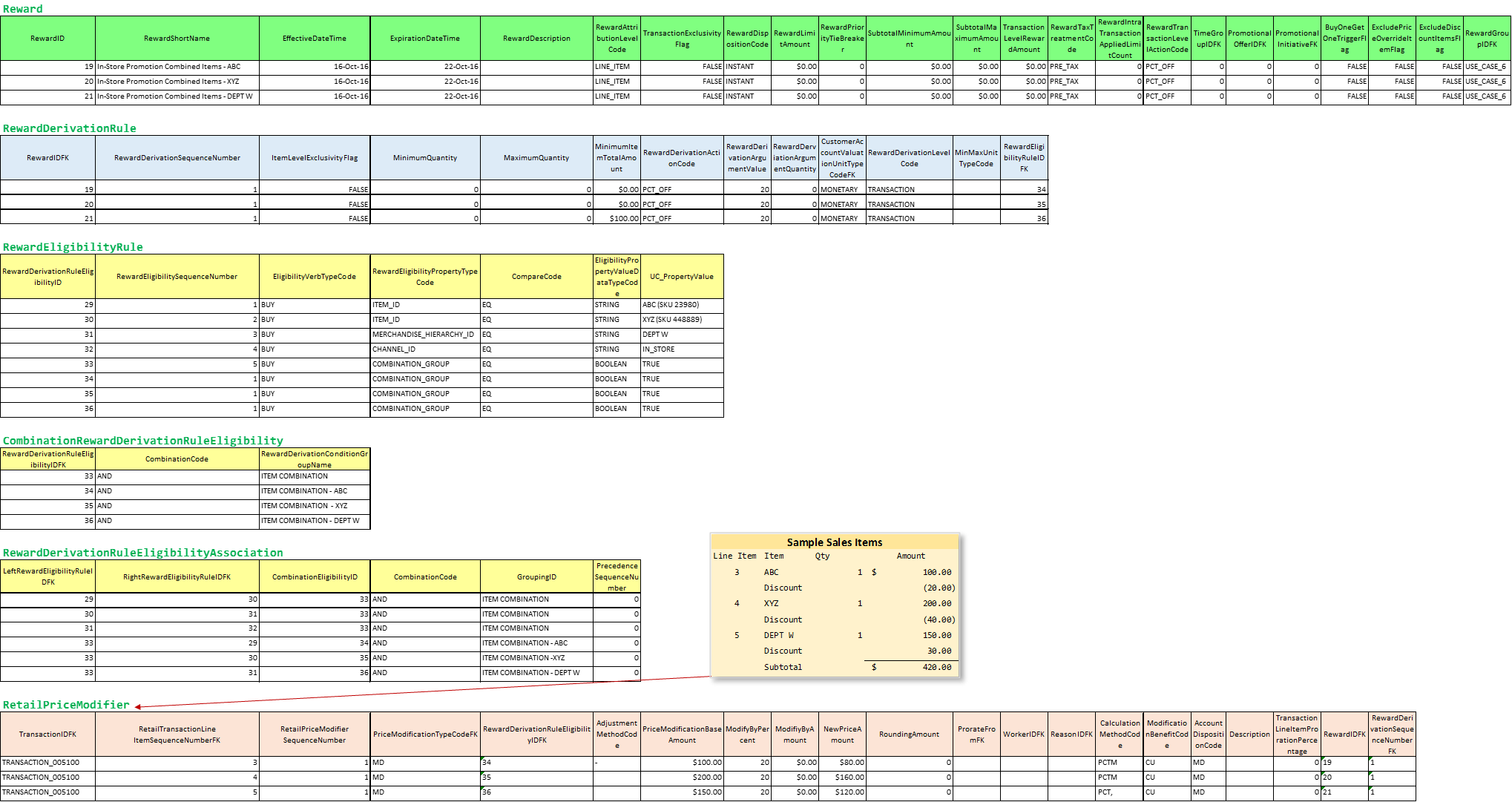Business Description
This use case illustrates an item-based promotion that involves combinations of specific items and item hierarchies. Retailers often create promotions that incorporate a combination of specific items or item categories.
Buy an ABC (SKU 23980), an XYZ (SKU 448889) and any item from Department W with a retail value of $100 or more from one of our conviently located stores and take 20% off your purchase (of the aforementioned items - not the whole transaction).
Assumptions
•The promotion runs from October 16, 2016 through October 22, 2016;
•This offer is only available for items purchase at an ARTS CLUB store;
•The discounts are applicable to the line items that are eligible for the discount not the whole transaction. Accordingly this is a line item oriented reward; and
•This promotion is open to ALL customers.
Eligibility
The following conditions must be satisfied within a RetailTransaction to derive this Reward
•This use case involves eligibility criteria that involve multiple SaleReturnLineItem entity instances. Specifically it requires three separate line items that:
❖Sell item ABC (SKU 23980) AND
❖Sell item XYZ (SKU 448889) AND
❖Sell any item from Department W with a retail value of $100 or more(a merchandise hierarchy group)
❖Within the same RetailTransaction
•The reward applies to purchases made through the IN_STORE channel
•The eligibility rules, because they require comparison of attribute values across multiple SaleReturnLineItem instances have to be executed in a subtotal level routine in the point of sale application.
Derivation
There are three RewardDerivationRule associated with this reward.
•The first RewardDerivationRule applies to a SaleReturnLineItem with an item ABC (SKU 23980) if all eligibility criteria are satisifed;
•The second RewardDerivationRule applies to a SaleReturnLineItem with an item XYZ (SKU 448889) if all eligibility criteria are satisfied; and
•The third RewardDerivationRule applies to a SaleReturnLineItem with an item from Department W with a retail value greater than or equal to $100.
The tricky part of derivation is that the eligibility conditions combine criteria across three separate SaleReturnLineItem instances in a transaction using an AND conjunction which means that all conditions must be TRUE for the RewardDerivationRule to be applied. This means that the Reward is attributed to each line item but the eligibility criteria are derived from multiple line items. This requires executing the eligibility criteria and reward derivation logic at a subtotal level within the retail transaction process. The ARTS ODM, as designed, assumes that a POS application will incorporate some kind of subtotal logic that scans the complete retail transaction, evaluates inter-line item reward eligibility rules, derives the rewards and applies them at the appropriate line item or transaction total level.
Disposition
•This use case involves the conditional creation of three Reward instances;
•The reward value (20% discount) is captured and applied as three RetailPriceModifier entity instances for each of the three qualifying SaleReturnLineItem entity instances.
Accounting Disposition
•This is a point of sale markdown
Worked Entity Attribute Value Example
The next figure presents filled in entities. The values are made up examples designed to show how the reward scenario rules will be stored in the ARTS ODM entities.
Figure 51 - Use Case 6 - In-store Promotion - Combined Eligibility Criteria

.